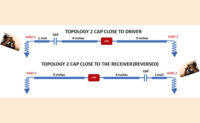Gustavo Blando
Gustavo Blando is a Senior Principal Engineer and leading Principal SI/PI Architect at Samtec Inc. In addition to his leadership roles, he's charged with the development of new SI/PI methodologies, high speed characterization, tools and modeling in general. Gustavo has twenty plus years of experience in Signal Integrity and high-speed circuits.
ARTICLES
DesignCon 2024 Best Paper Award Winner
Read More
3D Connection Artifacts in PDN Measurements
DesignCon 2023 Best Paper Award Winner
August 24, 2023










